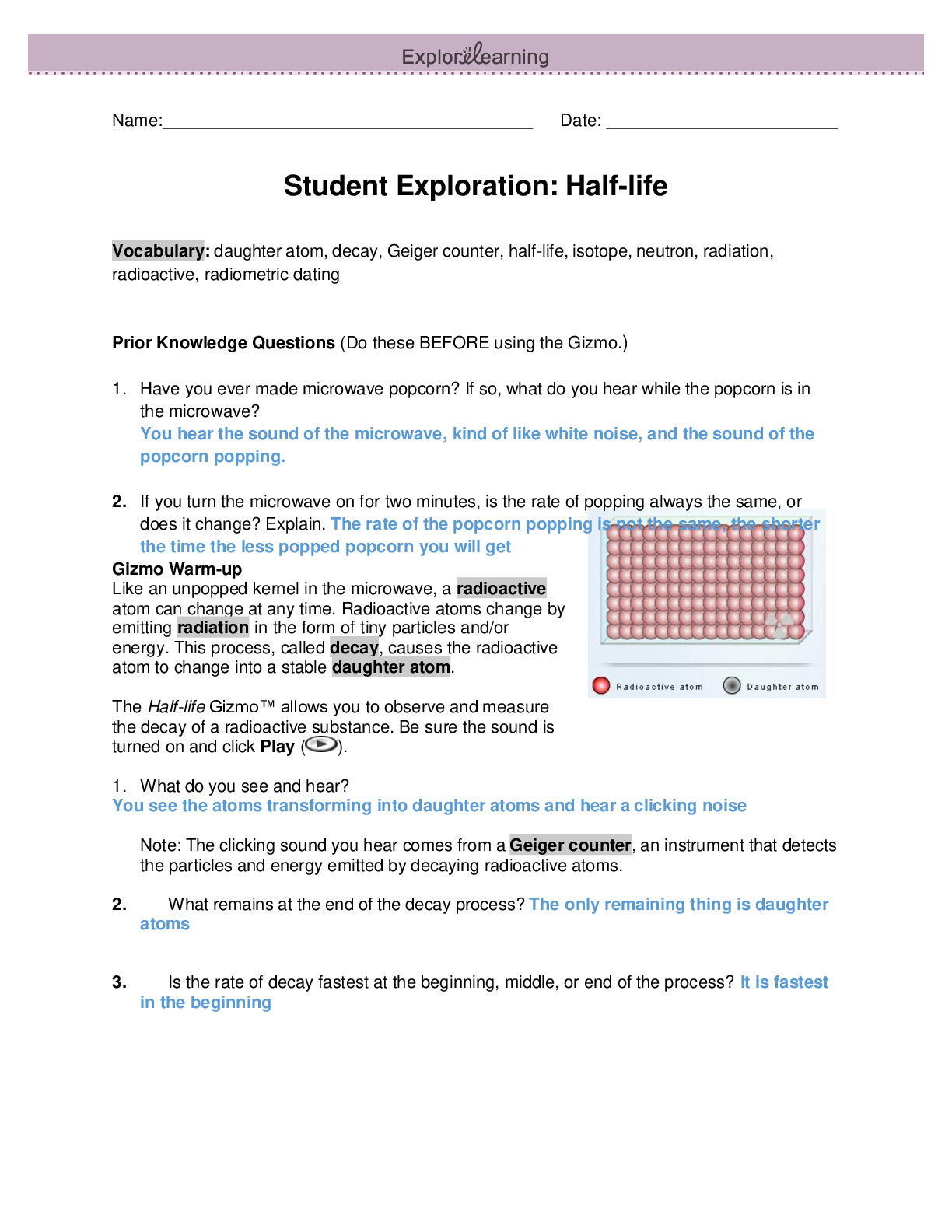Student Exploration: Half-life
Course
English
Subject
Chemistry
Category
Study Guide
Pages
5
Uploaded By
ATIPROS
Preview 2 out of 5 Pages


Download all 5 pages for $ 7.50
Reviews (0)
$7.50
